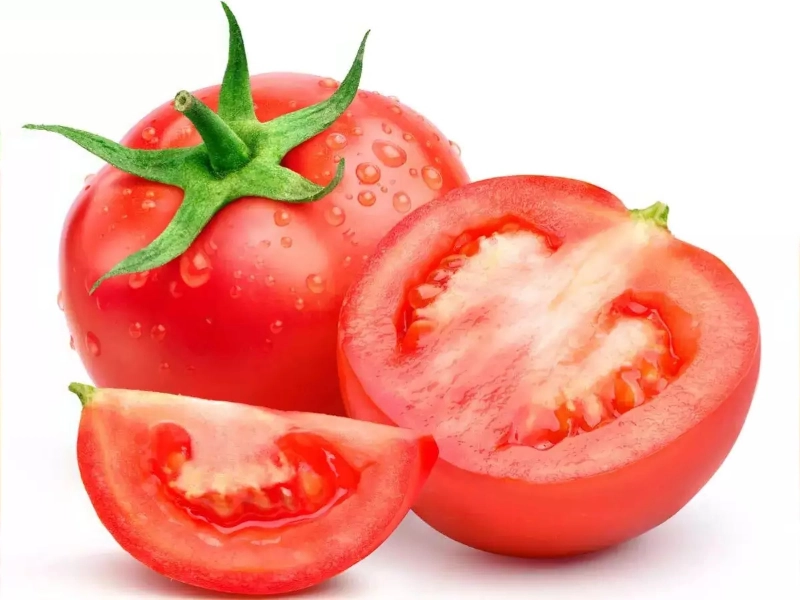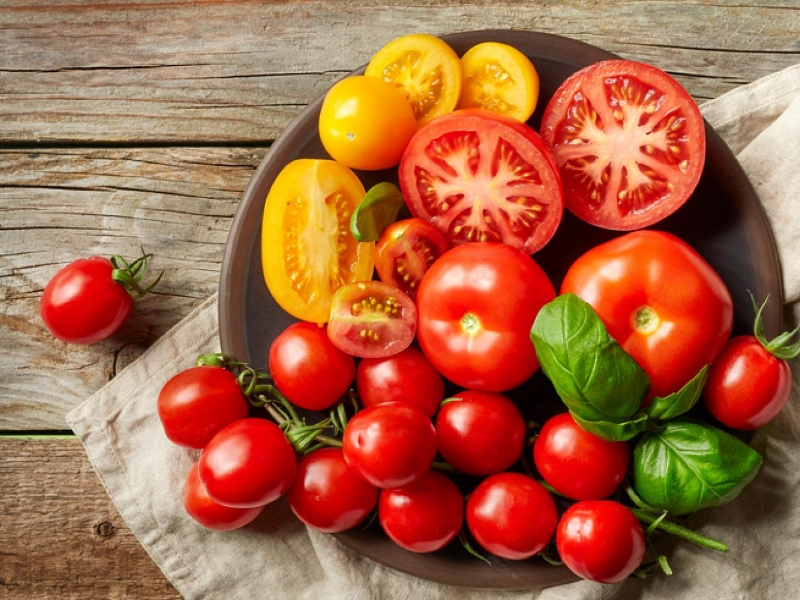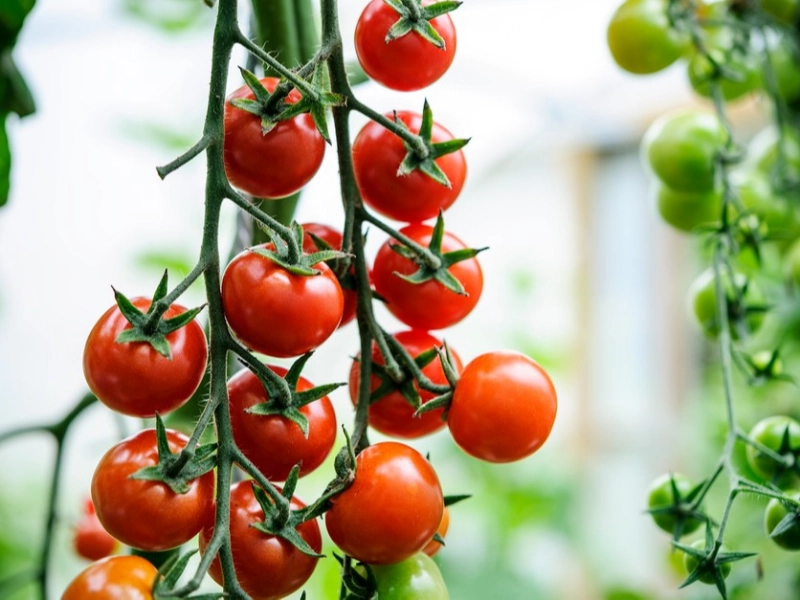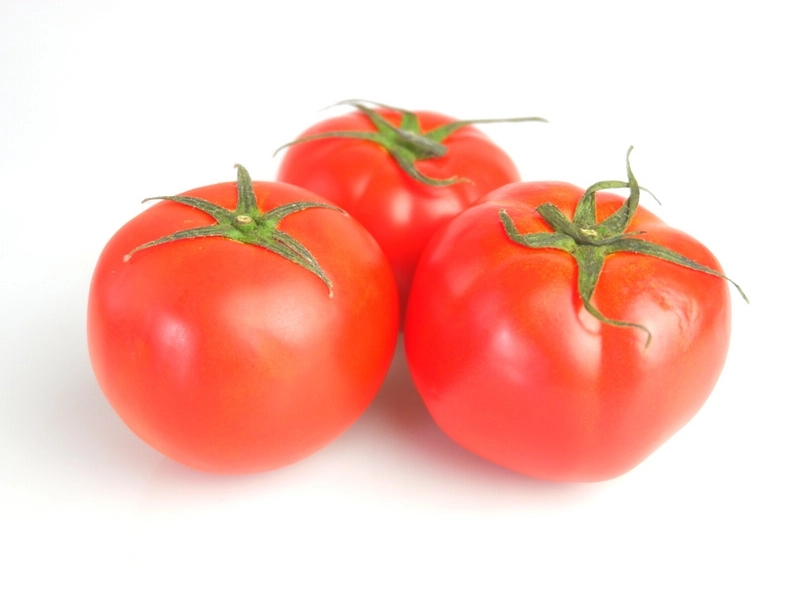Are Tomatoes High in Sugar?
The glycemic index is low for tomatoes. Since they don't raise blood sugar levels as sharply as many foods with a high glycemic index do, they are an excellent option for diabetics. They have natural sugar, but the sugar in tomatoes is slowly absorbed, preventing a sharp rise in blood sugar levels, in contrast to the added sugar found in soda, candies, and cakes. They also supply a good dose of lycopene, vitamin C, and fiber.
1. Sugar That Is Natural

2. sugar fructose
 The main naturally occurring monosaccharide sugar found in honey, some fruits (including figs), and some vegetables in trace amounts is fructose. Fructose and glucose combine to make sucrose, the table sugar. The liver, pancreas, gut, and skeletal muscle convert glucose and fructose to produce glycogen, which is used to provide energy.
The primary sugars, fructose and glucose, along with the organic acids malic and citric acid, are crucial for tomato fruit flavor and are therefore critical breeding characteristics. It was investigated how these metabolites varied phenotypically at various fruit stages and locations.
S-type cherry tomatoes accumulated the highest quantity of fructose among the various cultivars examined. LeSUT1 and LeSUT2, as well as the hexose transporter SwEET7a, which is involved in carbohydrate allocation, were found to be connected to the accumulation.
The main naturally occurring monosaccharide sugar found in honey, some fruits (including figs), and some vegetables in trace amounts is fructose. Fructose and glucose combine to make sucrose, the table sugar. The liver, pancreas, gut, and skeletal muscle convert glucose and fructose to produce glycogen, which is used to provide energy.
The primary sugars, fructose and glucose, along with the organic acids malic and citric acid, are crucial for tomato fruit flavor and are therefore critical breeding characteristics. It was investigated how these metabolites varied phenotypically at various fruit stages and locations.
S-type cherry tomatoes accumulated the highest quantity of fructose among the various cultivars examined. LeSUT1 and LeSUT2, as well as the hexose transporter SwEET7a, which is involved in carbohydrate allocation, were found to be connected to the accumulation.
3. Glucose
 Due to their low carbohydrate content, tomatoes shouldn't significantly raise blood sugar levels in diabetics. But it's crucial to read the nutritional label if you're consuming tomato juice or any other processed tomato product because they could have higher carbs than whole tomatoes.
The sole monosaccharide found in tomatoes is glucose, which contributes significantly to fruit quality and makes up a portion of the total soluble solids (Goff and Klee, 2006). Plants likewise get most of their energy from glucose. In green plants, it is created during photosynthesis and stored as starch. For use in foods and drinks, starch can be commercially divided into glucose, maltodextrins, and polyols.
Tomatoes have a lot of additional elements that are beneficial to health, in addition to a high natural sugar content. On the other hand, be wary of other tomato-based goods as they can contain additional fructose, sucrose, dextrose, or evaporated cane sugar.
Due to their low carbohydrate content, tomatoes shouldn't significantly raise blood sugar levels in diabetics. But it's crucial to read the nutritional label if you're consuming tomato juice or any other processed tomato product because they could have higher carbs than whole tomatoes.
The sole monosaccharide found in tomatoes is glucose, which contributes significantly to fruit quality and makes up a portion of the total soluble solids (Goff and Klee, 2006). Plants likewise get most of their energy from glucose. In green plants, it is created during photosynthesis and stored as starch. For use in foods and drinks, starch can be commercially divided into glucose, maltodextrins, and polyols.
Tomatoes have a lot of additional elements that are beneficial to health, in addition to a high natural sugar content. On the other hand, be wary of other tomato-based goods as they can contain additional fructose, sucrose, dextrose, or evaporated cane sugar.
4. Lecopene
 The antioxidant carotenoid pigment lycopene is responsible for the red color of many fruits and vegetables. It is an extremely potent nutrient that has been demonstrated to guard against oxidative damage, cancer, heart disease, and other ailments. In the Western world, tomatoes constitute the most significant dietary source of lycopene.
According to studies, lycopene lowers blood pressure, oxidative damage to cells, cholesterol, and the growth of cancer. Additionally, it seems to prevent prostate cancer by promoting the body's production of detoxifying proteins.
Cooked tomato products are a better source of lycopene than raw ones. For added benefits, natural antioxidants like beta-carotene and vitamin E are frequently added to processed tomatoes. Most people can safely consume lycopene from supplements, but those who take blood thinners or other medications that influence the coagulation system, have high blood pressure, or have high cholesterol should exercise caution when using synthetic lycopene supplements.
The antioxidant carotenoid pigment lycopene is responsible for the red color of many fruits and vegetables. It is an extremely potent nutrient that has been demonstrated to guard against oxidative damage, cancer, heart disease, and other ailments. In the Western world, tomatoes constitute the most significant dietary source of lycopene.
According to studies, lycopene lowers blood pressure, oxidative damage to cells, cholesterol, and the growth of cancer. Additionally, it seems to prevent prostate cancer by promoting the body's production of detoxifying proteins.
Cooked tomato products are a better source of lycopene than raw ones. For added benefits, natural antioxidants like beta-carotene and vitamin E are frequently added to processed tomatoes. Most people can safely consume lycopene from supplements, but those who take blood thinners or other medications that influence the coagulation system, have high blood pressure, or have high cholesterol should exercise caution when using synthetic lycopene supplements.
5. Calcium
 It has been demonstrated that a diet high in potassium and low in sodium lowers the risk of heart disease. Along with beans, oranges, bananas, and leafy greens, tomatoes are a good source of this mineral. By opposing the body's acids, potassium also aids in preventing a dip in blood pH.
To guarantee excellent fruit, tomatoes require a lot of potassium. Trials conducted in the UK have shown that an appropriate supply enhances fruit yield and improves water use efficiency. In addition, it helps maintain ionic balance, facilitates the movement of nutrients, and is necessary for the production of proteins and pigments, including lycopene.
In addition, tomatoes are a strong source of folate, which can help lower homocysteine levels, a heart disease risk factor. Additionally, a high-folic acid diet can lower the risk of stroke.
It has been demonstrated that a diet high in potassium and low in sodium lowers the risk of heart disease. Along with beans, oranges, bananas, and leafy greens, tomatoes are a good source of this mineral. By opposing the body's acids, potassium also aids in preventing a dip in blood pH.
To guarantee excellent fruit, tomatoes require a lot of potassium. Trials conducted in the UK have shown that an appropriate supply enhances fruit yield and improves water use efficiency. In addition, it helps maintain ionic balance, facilitates the movement of nutrients, and is necessary for the production of proteins and pigments, including lycopene.
In addition, tomatoes are a strong source of folate, which can help lower homocysteine levels, a heart disease risk factor. Additionally, a high-folic acid diet can lower the risk of stroke.








